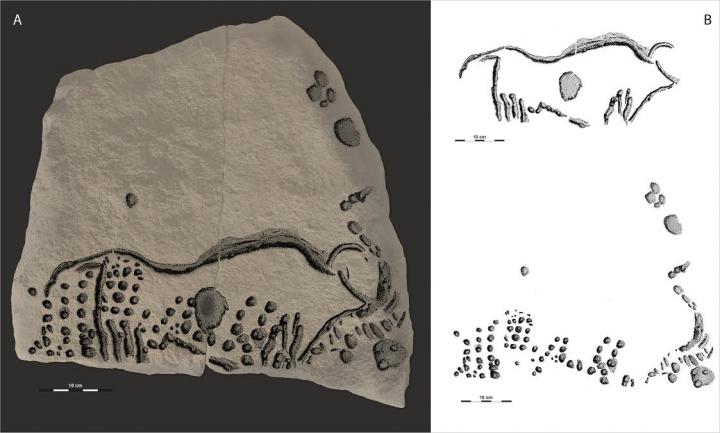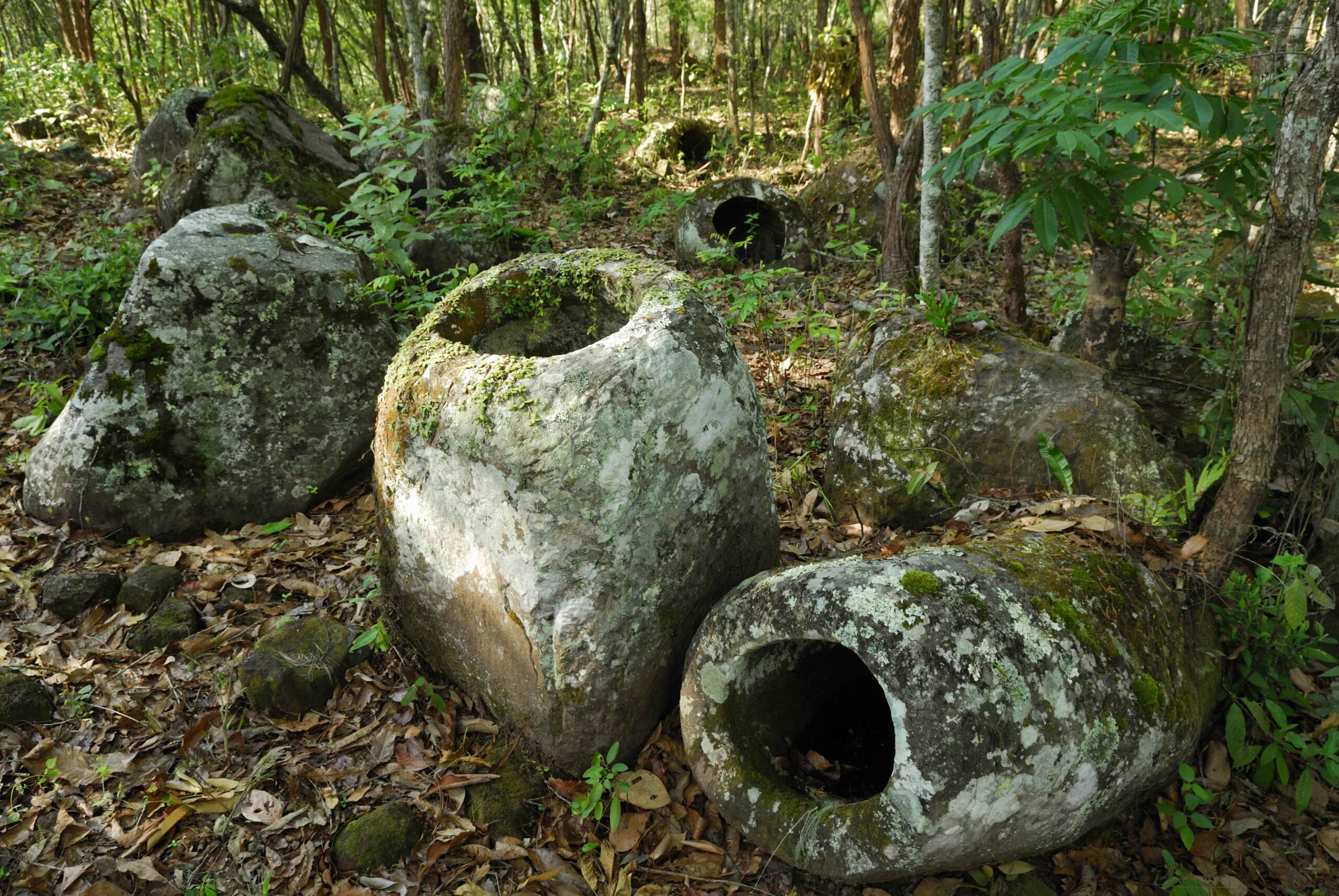
VÉZÈRE VALLEY, FRANCE—According to a report in Live Science, Randall White of New York University and his colleagues have discovered 16 limestone blocks at Abri Cellier that are thought to have been re-shaped and engraved some 38,000 years ago by Europe’s first modern humans. The mammoth and horse images on the blocks were formed with engraved dots and lines, a technique often associated with nineteenth-century pointilist artists. Fifteen of the tablets are thought to have been unearthed when the Aurignacian-period site was first excavated in 1927, but they were set aside and not studied at the time. The sixteenth tablet, which had been broken in half, was recovered during the new excavation, and it provided the date for the find. For more, go to “On the Origins of Art.”









